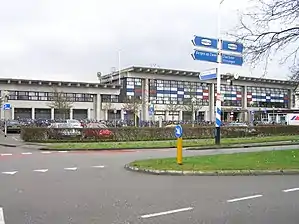Goes
Goes (Dutch pronunciation: [ɣus] ⓘ) is a city and municipality in the southwestern Netherlands on Zuid-Beveland, in the province of Zeeland. The city of Goes has approximately 29,000 residents.
Goes | |
|---|---|
City and municipality | |
 Harbour of Goes | |
 Flag  Coat of arms | |
.svg.png.webp) Location in Zeeland | |
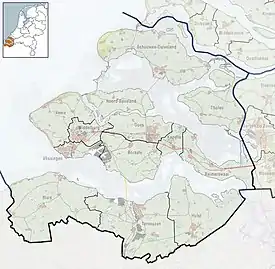 Goes Location within the province of Zeeland  Goes Location within the Netherlands  Goes Location within Europe | |
| Coordinates: 51°30′N 3°53′E | |
| Country | Netherlands |
| Province | Zeeland |
| Government | |
| • Body | Municipal council |
| • Mayor | Margo Mulder (PvdA) |
| Area | |
| • Total | 101.92 km2 (39.35 sq mi) |
| • Land | 92.58 km2 (35.75 sq mi) |
| • Water | 9.34 km2 (3.61 sq mi) |
| Elevation | −1 m (−3 ft) |
| Population (January 2021)[4] | |
| • Total | 38,594 |
| • Density | 417/km2 (1,080/sq mi) |
| Demonym | Goesenaar |
| Time zone | UTC+1 (CET) |
| • Summer (DST) | UTC+2 (CEST) |
| Postcode | 4460–4483 |
| Area code | 0113 |
| Website | goes |
History

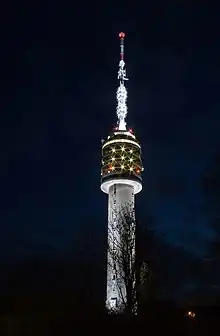
Goes was founded in the 10th century on the edge of a creek: de Korte Gos (the Short Gos). The village grew fast, and in the early 12th century it had a market square and a church devoted to Mary Magdalene. By 1300 it had a brick castle, now known as Oostende Castle.
In 1405 Goes received city rights from William II, Duke of Bavaria, by his right as count of Holland, and in 1417 it was allowed to build town walls. The prosperity of the city was based upon the cloth industry and the production of salt. In the 16th century, Goes declined. Its connection to the sea silted up and in 1554 a large fire destroyed part of the city.
In the autumn of 1572, during the course of the Eighty Years' War, Goes, in the Spanish Netherlands, was besieged by Dutch forces with the support of English troops. The siege was relieved in October 1572 by Spanish tercios, who waded across the Scheldt to attack the besieging forces. In 1577 the Spanish soldiers who occupied Goes were driven out by Prince Maurice of Nassau. The prince built a defence wall around Goes, which is still partly standing. From the 17th century, Goes did not play an important role, except as an agricultural centre. In 1868 a railway was constructed through it, but this did not lead to industrialisation. Agriculture remains the most important economic activity.
Although the Netherlands were neutral in the First World War, seven bombs hit Goes and Kloetinge, due to an error by a British airplane. A house in Magdalenastreet in Goes was destroyed and one person killed. Goes did not suffer extensive damage during the Second World War, but was under German occupation until 1944.
Goes did not experience much population growth until the 1970s and 1980s. Then, the city grew fast because of new districts like Goese Meer, Oostmolenpark, Overzuid and Ouverture being constructed. Goes is now the fourth largest economic centre in Zeeland. New districts are in preparation, amongst them Goese Schans, Mannee and Aria, where 3,000 new houses are to be built.
Population centers
- Eindewege
- Goes
- 's-Heer Arendskerke
- 's-Heer Hendrikskinderen
- Kattendijke
- Kloetinge
- Oud-Sabbinge
- Wilhelminadorp
- Wolphaartsdijk
Topography
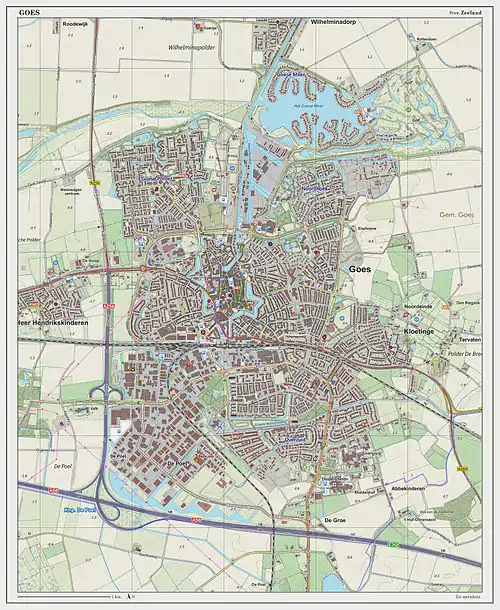
Dutch Topographic map of Goes (town), Sept. 2014.
Districts
- Centre Goes
- West Goes
- New West
- East Goes
- Noordhoek
- Goese Meer
- Goese Polder
- South Goes
- Overzuid
- Ouverture
- De Goese Poort (business area)
- De Poel (I, II, III en IV, business area)
- Klein Frankrijk (business area)
- Marconi (business area)
- Aria (developing)
- Mannee (developing)
- Goese Schans (developing)
International relations
Transport
Goes has a railway station located on the Roosendaal–Vlissingen railway.
Notable people
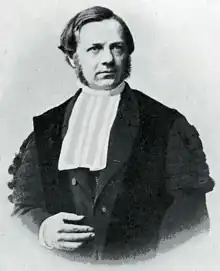
Public thinking & service
- Cornelis Caesar (c. 1610–1657), merchant and governor of Formosa
- C. H. D. Buys Ballot (1817–1890), chemist and meteorologist, invented Buys Ballot's law
- Isaäc Dignus Fransen van de Putte (1822–1902), politician
- Jacob Adriaan de Wilde (1879–1956), politician and jurist
- Leendert Ginjaar (1928–2003), politician and chemist
- Bas van Fraassen (born 1941), philosopher
- Albert J. R. Heck (born 1964), scientist and academic
- Katinka Simonse (born 1979) known as Tinkebell, artist
The arts
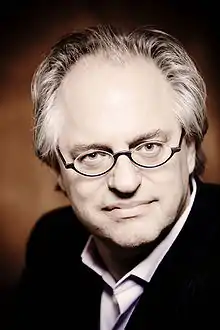
- Willem Eversdijck (c. 1620–1671), Golden Age painter
- Pieter Peutemans (1641–1698), Golden Age painter
- Pieter Adriaan Jacobus Moojen (1879- 1955), architect, painter and writer
- Leo van Doeselaar (born 1954), classical organist and conductor
- Boudewijn Vincent Bonebakker (born 1968) and Frank Harthoorn, guitarists of Gorefest
Sports
- Myrna Veenstra (born 1975), former field hockey player, bronze medallist at the 2000 Summer Olympics
- Martijn Dieleman (born 1979), former Dutch volleyball player, competed at the 2000 Summer Olympics
- Lesley Pattinama Kerkhove (born 1991), tennis player
Gallery
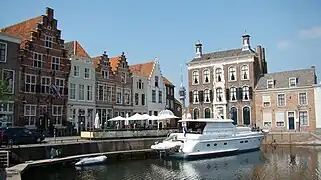 City harbor of Goes
City harbor of Goes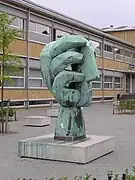 Beeld Bergweg
Beeld Bergweg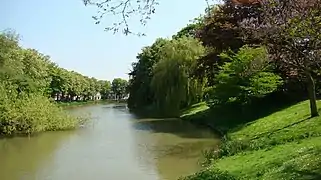 De veste (canal) in Goes
De veste (canal) in Goes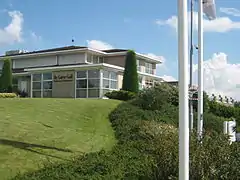 Goese Golf Clubhuis
Goese Golf Clubhuis
References
- "Samenstelling B&W" [Members of the board of mayor and aldermen] (in Dutch). Gemeente Goes. Archived from the original on 13 December 2013. Retrieved 10 December 2013.
- "Kerncijfers wijken en buurten 2020" [Key figures for neighbourhoods 2020]. StatLine (in Dutch). CBS. 24 July 2020. Retrieved 19 September 2020.
- "Postcodetool for 4461GE". Actueel Hoogtebestand Nederland (in Dutch). Het Waterschapshuis. Archived from the original on 21 September 2013. Retrieved 8 December 2013.
- "Bevolkingsontwikkeling; regio per maand" [Population growth; regions per month]. CBS Statline (in Dutch). CBS. 1 January 2021. Retrieved 2 January 2022.
- "Delegatie uit zusterstad Panevežys brengt bezoek aan Goes". pzc.nl (in Dutch). PZC. 2018-06-04. Retrieved 2019-10-22.
- Town council meeting 22 july 2021, item 10 (in Dutch) , online consulted 2022-03-28.
External links
 Media related to Goes (municipality) at Wikimedia Commons
Media related to Goes (municipality) at Wikimedia Commons- Official website (in Dutch)
